In the Open tournament, the battle-hardenedness and the dexterity of the two leaders Gupta and Lalith are uncanny. Today they vanquished respectively S. Nitin and Sipke Ernst, and remained a point ahead of their fellow countryman who is now unshared third: Chanda Sandipan.
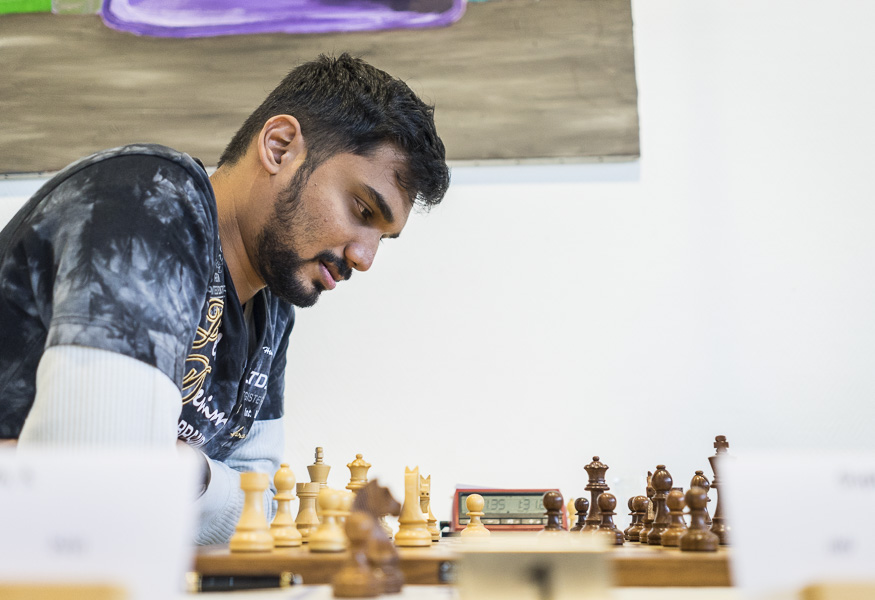
S. Nitin Photo: Lennart Ootes
Nitin - Gupta
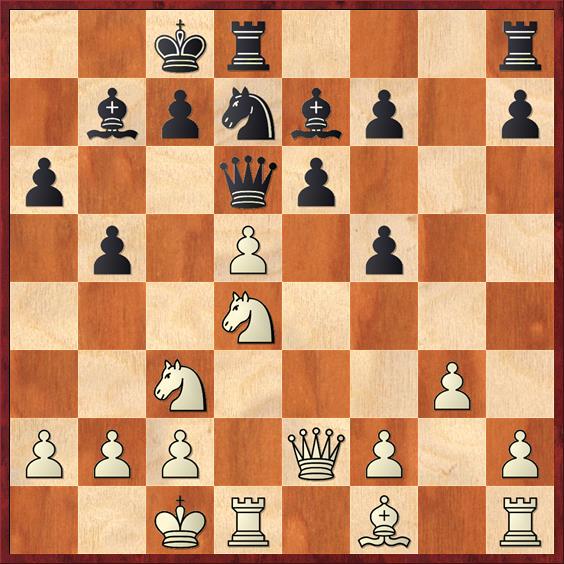
In this interesting position, Nitin made a promising exchange sacrifice:
14.dxe6! Bxh1 15.exd7+ Rxd7 16.Nxf5 Bg5+
16...Qe6 17.Qxe6 fxe6 18.Nxe7+ Rxe7 19.Bxb5 axb5 20.Rxh1 probably yields White enough for the exchange; or 16...Qc5 17.Bh3! Rxd1+ 18.Qxd1 and White emerges with two pieces versus rook.
17.f4 Bxf4+ 18.Kb1! Qe6 19.Rxd7?!
19.Nd4! Qxe2 20.Bxe2 Rxd4! 21.Rxd4 Be5 and, as tends to happen in such situations, miraculously material is exactly equal again. White is a little more active.
19...Qxd7 20.Bh3 Kb8 21.gxf4 Re8
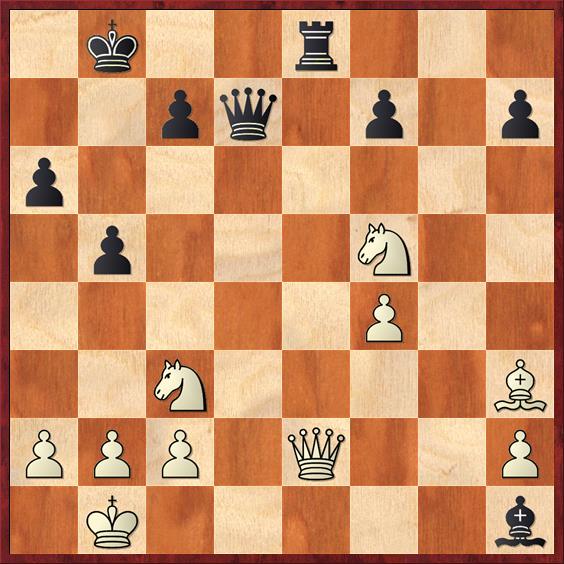
22.Qd1
In the endgame, the rook rules supreme. More chances to hold were offered by 22.Qf2, even if the white pieces look a little clumsy here. He does threaten 23.Ng7 though.
22...Qxd1+ 23.Nxd1 Re2 24.Nfe3 Rxh2
White manages to organize his troops, but now the well-supported passed h-pawn prevails against White’s minor pieces.
25.Bf1 Bf3 26.a4 bxa4 27.Bxa6 h5 28.Bc4 f6 29.Bd5
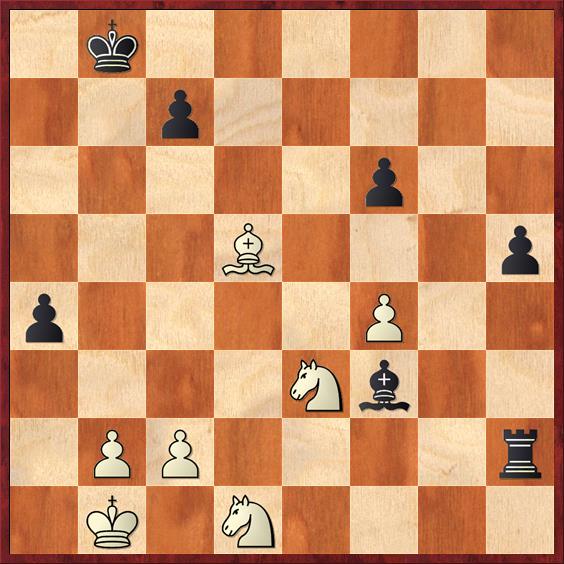
29...Bxd1 30.Nxd1 Rd2 31.Bf3 h4 32.Kc1 Rd4 33.f5 Rf4 34.Bc6 Rxf5 35.Ne3 Rg5 36.Bd7 h3 37.Bxa4 Kb7
Keeping the bishop from the diagonal, after which the pawn marches on unhindered: 0–1
Lalith - Ernst
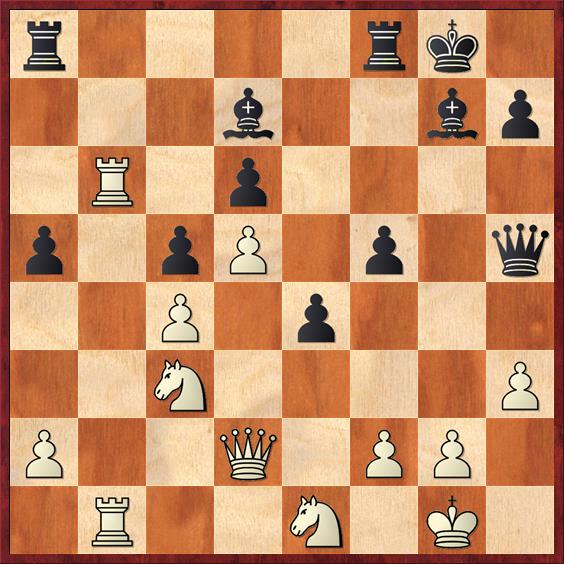
Ernst had carried out a rather circuitous manoeuvre with his knight on the queenside, but because Lalith was playing his light-squared bishop up and down a little irresolutely, Black is doing fine here. However, with his next move Ernst goes a little too far:
24...f4!? 25.Nxe4 Rae8?
25...Bf5 26.f3 Bd4+ 27.Kh2 Rae8 would have given just enough compensation: 28.Nxd6!? Be3 29.Qb2 Bd4 with repetition, since as soon as the queen leaves the second rank, for instance with 30.Qa3, then 30...Bxh3! is the signal for the mate attack.
26.Nxd6 Re2 27.Qd3 Bd4
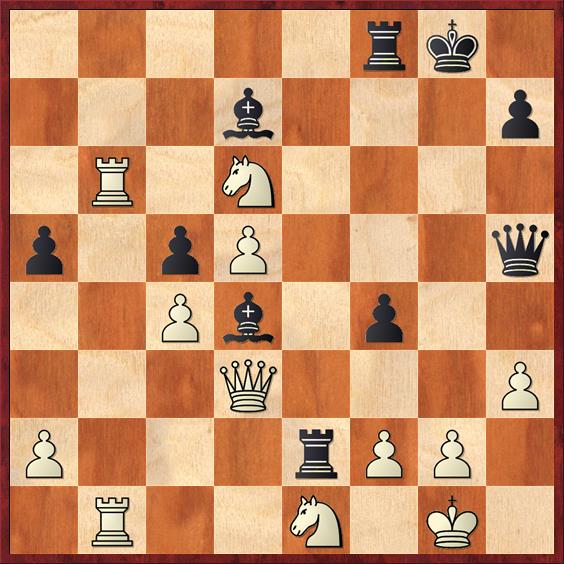
This too looks great for Black, but White has a brilliant parry:
28.Qf3!! Bxf2+ 29.Kf1!
And now Black has to enter an unfavourable endgame:
29...Qxf3 30.Nxf3 Rxa2 31.Rb7 Ba4
Now he loses the a-pawn in the end, but 31...Be8 32.Nxe8 Rxe8 33.d6 would go badly wrong.
32.R7b2! Rxb2 33.Rxb2 Be3 34.Ra2 Bb3 35.Rxa5 Rd8 36.Ra6
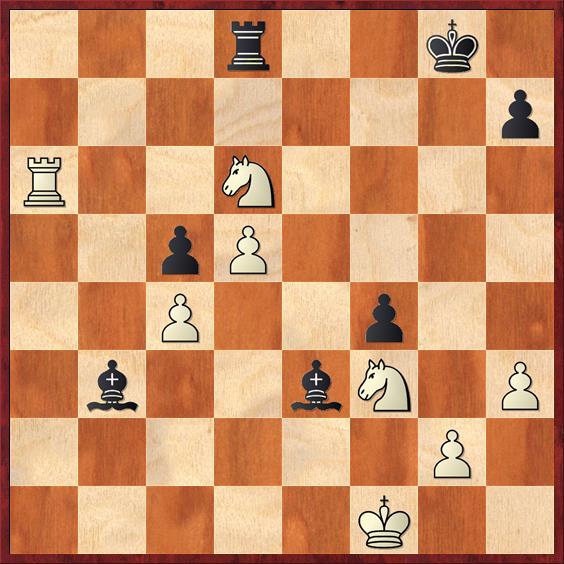
Very frustrating: nothing works for Black here. White converted the endgame on move 67.
Shyam had to bite the dust today against the ruling Open Dutch champion Chanda Sandipan. Black suffered from lack of space in this game, and his problems mounted after White’s breakthrough with 21.e5.
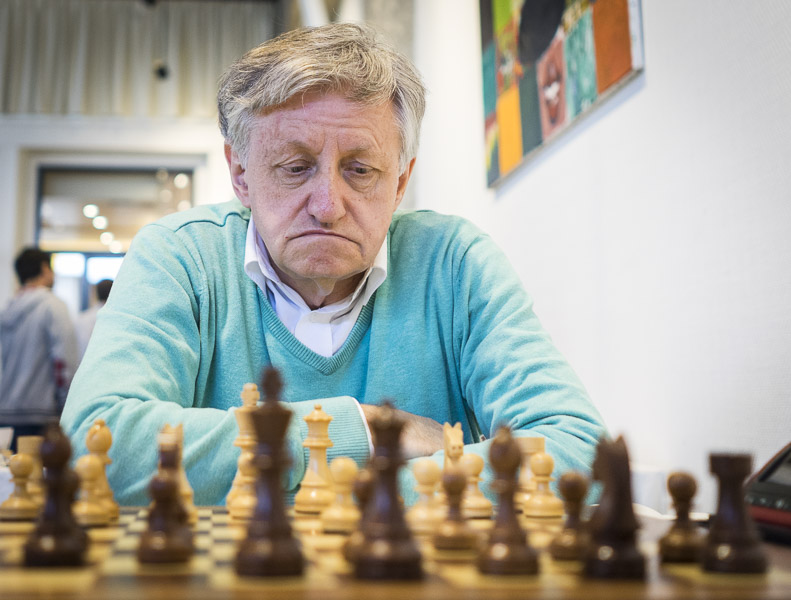
Oleg Romanishin .Photo: Lennart Ootes
In spite of the fact that the tournament is not going well for him, Romanishin played on board four today. Eesha Karavade made her moves quickly, and the Ukrainian feared deep preparation. But still Romanishin obtained a winning position.
Romanishin - Karavade
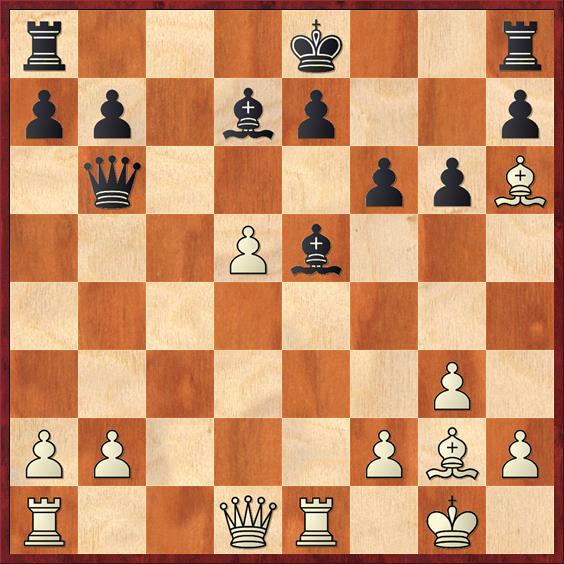
16.d6
Also interesting was 16.Bg7 Rg8 17.Rxe5!.
16...Be6?
She had to try 16...Bxd6. Then after 17.Qd5 Bb4 18.Rec1 White has nice compensation.
17.dxe7 Kxe7
This position is untenable after the best move, 18.Qf3!.
18.Be3!? Qb5 19.a4 Qb4 20.f4 Rhd8 21.Qe2 Bc7 22.Bf2 Rd6
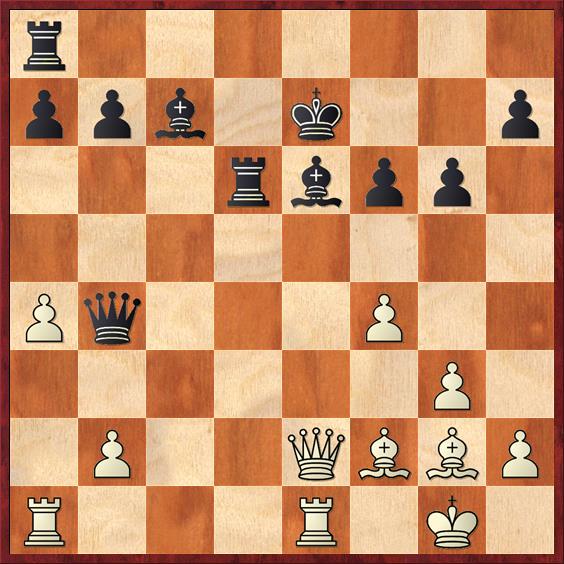
23.Bd5?!
Brilliant – Romanishin thinks that e6 can’t be protected a third time. But it can!
23...Bb6! 24.Bxe6
Also interesting is 24.f5!? Bxf2+ 25.Qxf2 Rxd5 26.Rxe6+ Kf7 27.Rae1 Rxf5 28.Qe3 Qxb2!? and White’s attack is not decisive; also here chances are equal.
24...Bxf2+
Also possible was 24...Rd2 25.Qe4 (25.Qxd2!?) 25...Bxf2+ 26.Kf1 Qxe4.
25.Qxf2
Not 25.Kxf2?? Rd2.
25...Rxe6 26.Rxe6+ Kxe6 27.f5+ Kf7
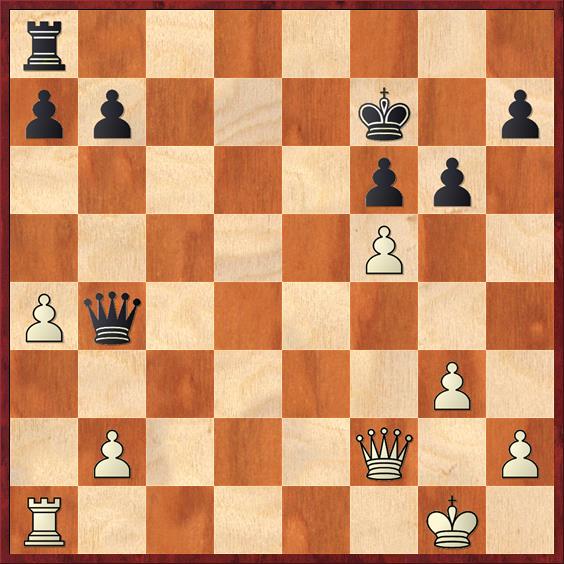
This also looks dangerous for Black, but White’s king is just as vulnerable as Black’s, and Karavade defends accurately.
28.Rd1 Re8 29.Rd4 Re1+ 30.Kg2 Qe7 31.Kh3 Re4 32.fxg6+ ½–½

Lucas van Foreest. Foto: Lennart Ootes
After all this violence, the best Dutchman on the ranking list is suddenly Lucas van Foreest. He defeated grandmaster Sundararajan Kidambi in a precarious but admirable game.
Kidambi - Van Foreest
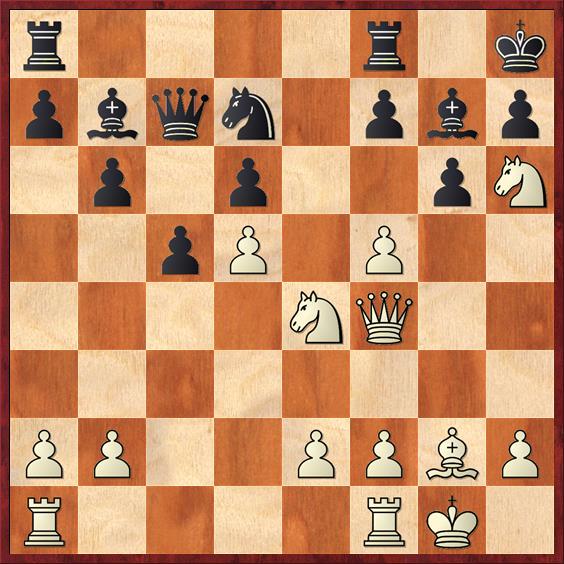
18...Bxb2?!!?
That takes guts.
19.Nxd6 Nf6
This offers better defensive chances for Black than 19...Be5 20.Nhxf7+ Kg8 21.Nxe5 Qxd6 22.Nxg6 Qxf4 (22...Qxg6?! 23.Qc7) 23.Nxf4 Rxf5 24.Ne6.
20.Rab1
Better was 20.fxg6 fxg6 21.Rab1, as now Black has a nasty defensive move:
20...Nh5! 21.Ndxf7+ Rxf7 22.Qxc7 Rxc7 23.Rxb2
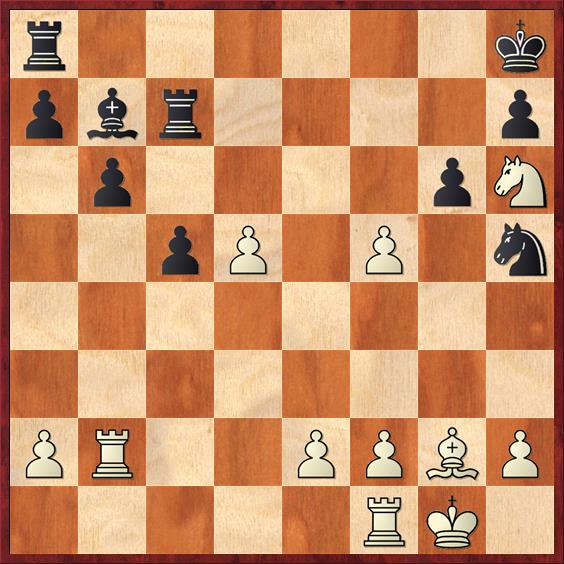
23...Nf4
Giving White another chance to obtain an advantage. Black could consolidate (does Lucas even know the term?) with 23...Kg7 24.Ng4 gxf5, for example: 25.d6 Bxg2!.
24.d6! Rg7
Now on 24...Bxg2 White has 25.dxc7 followed by 26.Rd1 (or, after 25...Bxf1, 26.Rd2).
25.Bxb7 Rxb7 26.f6 Nd5 27.Ng4 h5 28.Ne5 Nxf6
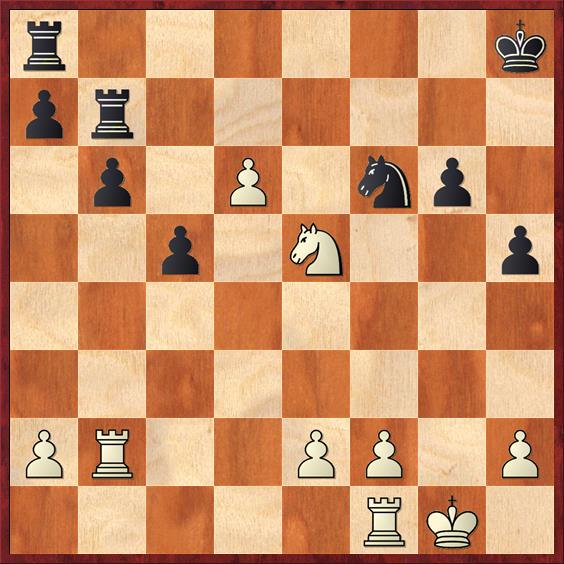
29.Nxg6+?!
The opening of the g-file works in favour of Black’s counterplay. White could have kept some hopes for a win after, for instance, 29.f4.
29...Kh7 30.Ne5 Rg7+ 31.Kh1 Rd8
If White now protects the pawn, there always follows 32...Ne4.
32.d7 Ng4!
Salvation.
33.Nxg4 hxg4
In this rook ending Black is even better because his c-pawn is further advanced, and Van Foreest did a fine job converting.
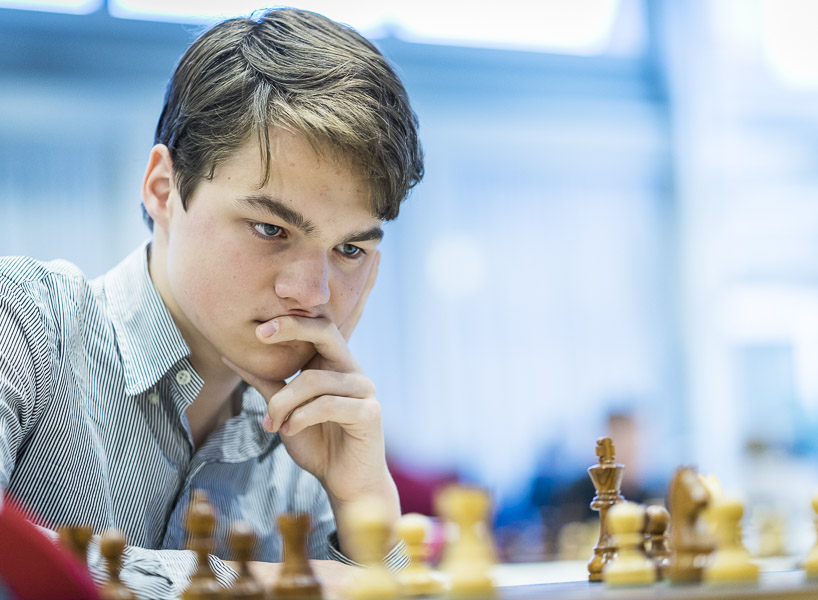
Lucas van Foreest. Photo: Lennart Ootes

Commentator Cor van Wijgerden. Photo: Lennart Ootes

Participant of the amateur event. Photo: Lennart Ootes

 .
. 






















